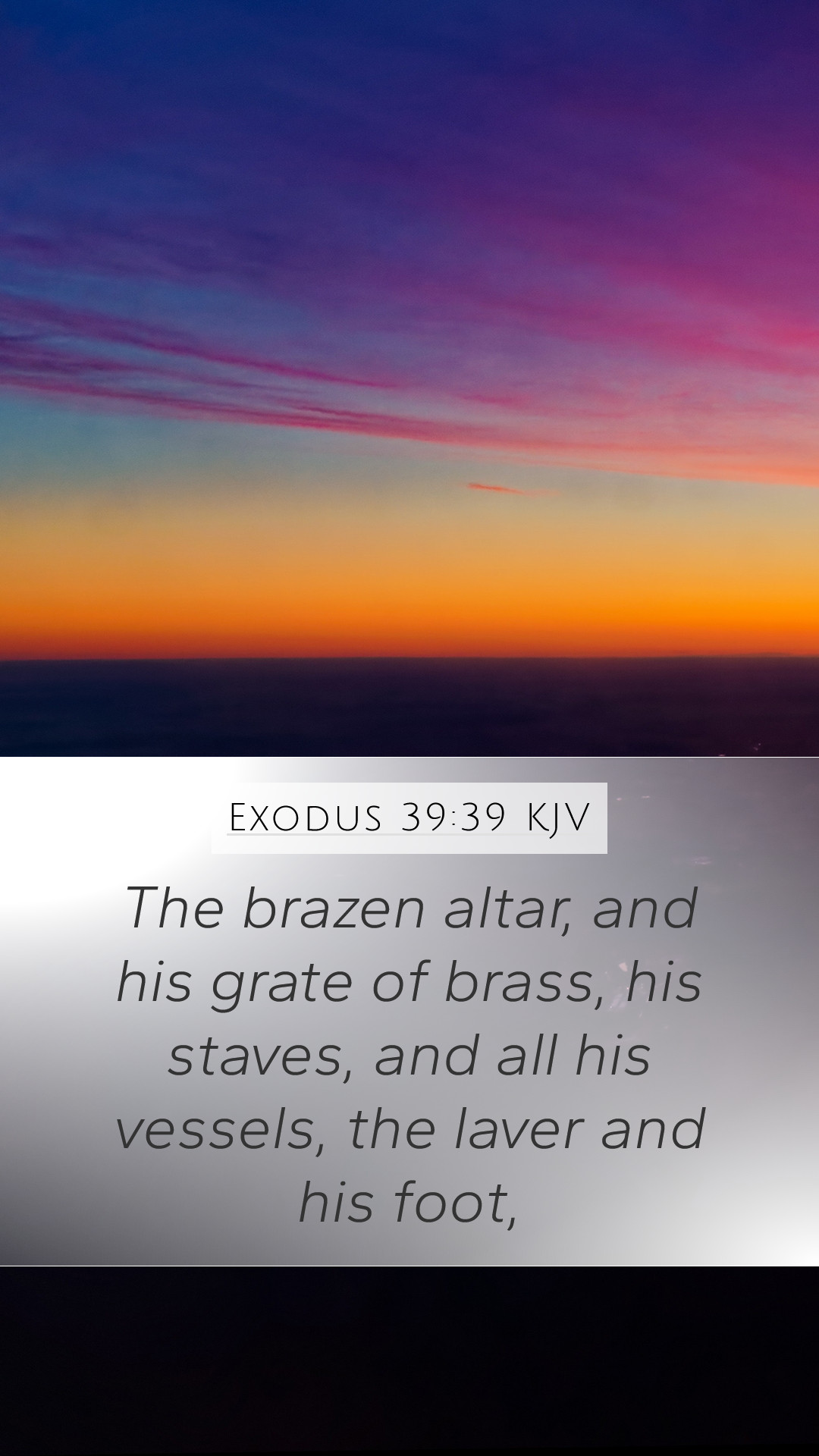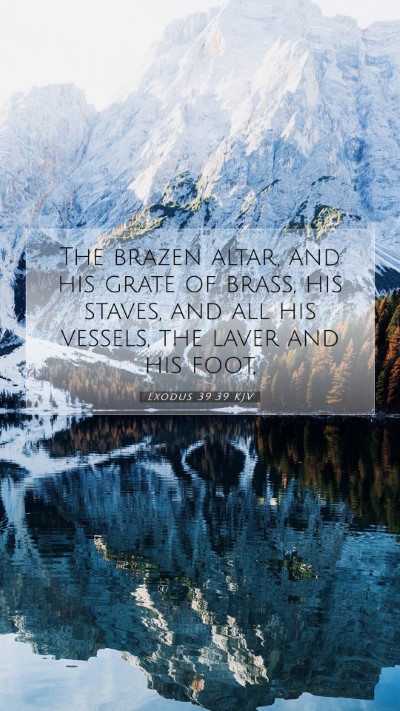Bible Verse Meaning and Commentary: Exodus 39:39
Verse: Exodus 39:39 - "The altar of burnt offering with its brazen grate, its staves, and all its vessels, the laver and its base."
Introduction to the Verse
Exodus 39:39 details specific items that were constructed for the Tabernacle, underscoring the importance of each element in the worship of God. Understanding this verse provides a window into the sacrificial system of the Israelites and the intricate details of their religious practices.
Historical Context
The Book of Exodus records the journey of the Israelites from slavery in Egypt to receiving the Law at Sinai. After being liberated, they entered into a covenant with God which included guidelines for worship and the establishment of the Tabernacle, a portable sanctuary. The items mentioned in Exodus 39:39 emphasize God's detailed instructions for worship, highlighting both the significance of the offerings and the sacredness of the space.
Bible Commentary Insights
- Matthew Henry: Matthew Henry notes that the altar of burnt offerings was essential for atonement and a symbol of sacrifice. He emphasizes that these details reflect God's holiness and the seriousness of sin, requiring a sacrificial system to approach Him.
- Albert Barnes: Barnes explains that the brazen altar signifies Christ’s sacrifice. He connects the Old Testament rituals to New Testament truths, asserting that the sacrifices prefigured the ultimate sacrifice of Jesus, thus laying a foundation for Christian faith.
- Adam Clarke: Clarke highlights the craftsmanship involved in constructing these items, which reflects the dedication of the Israelites to God. He points out that these elements served as reminders of God's presence and the holiness required in worship.
Theological Implications
The construction and meticulous detailing of the altar and its vessels reveal the theological principle of atonement and access to God through sacrifice. The laver symbolizes purification, echoing the need for interior cleansing as believers approach God in worship.
Application to Daily Life
While the specific practices of the ancient Israelites may not apply directly today, Christians can derive lessons about holiness, the significance of sacrifice, and the importance of careful devotion in their worship. Recognizing the serious nature of sin and the need for atonement can lead to deeper appreciation for Christ's sacrifice.
Cross References
- Leviticus 1:5: Describes the process of offering a sacrifice at the altar.
- Hebrews 9:22: Emphasizes the necessity of blood for forgiveness, linking Old Testament sacrifices to Christ's sacrifice.
- 1 Corinthians 6:19-20: Talks about the body being a temple of the Holy Spirit, connecting to the theme of sanctity and worship.
Concluding Thoughts
Exodus 39:39 invites believers to engage in serious reflection on worship, sacrifice, and God's holiness. In studying this verse, one can explore the broader themes of sacrificial atonement and divine dwelling among humanity, forging a link across the Testaments towards Jesus Christ.
Further Study and Resources
For those interested in a deeper exploration of Bible verse meanings and interpretations, various Bible study resources and Bible study tools are available. Engaging in online Bible study or joining Bible study groups can enhance understanding and application of Scripture in daily life.


